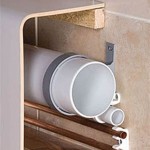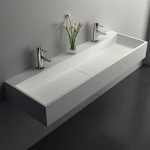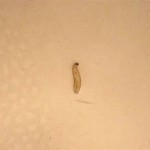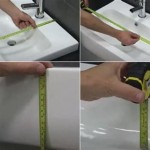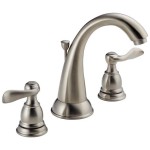Adjust Bathroom Sink Pop-Up Drain Assembly Instructions
The bathroom sink pop-up drain assembly is a crucial component of any bathroom sink, responsible for effectively draining water while also providing a means of stopping it when necessary. A properly functioning pop-up drain prevents leaks and ensures the convenience of filling the sink for various tasks. Over time, with regular use, these assemblies can sometimes require adjustments to maintain their optimal performance. Understanding the components of the assembly and the procedures for adjustment is essential for maintaining a functional and leak-free bathroom sink.
This article provides detailed instructions on how to adjust a bathroom sink pop-up drain assembly, focusing on common issues and their solutions. These instructions are applicable to most standard pop-up drain assemblies, although slight variations may exist depending on the specific manufacturer and model. Prior to commencing any adjustments, it is recommended to consult the manufacturer's instructions, if available, for the specific product.
Before initiating any adjustments, gather the necessary tools. Typically, this will include several adjustable wrenches, a pair of pliers, plumber’s putty, and potentially a screwdriver. Having a small container to collect any water that may be present in the drainpipe and a clean cloth to wipe away any spills is also advisable. Safety is paramount; therefore, ensure that the water supply to the sink is turned off before proceeding.
Understanding the Pop-Up Drain Assembly
The pop-up drain assembly consists of several key components. The primary element is the drain body, which is the main housing that sits inside the sink drain opening. This body is typically made of brass or plastic. Attached to the drain body is the tailpiece, a pipe that extends downward and connects to the P-trap. The P-trap is a U-shaped pipe that traps water, preventing sewer gases from entering the bathroom. The pop-up stopper is the component that blocks the drain opening, controlled by a lift rod located near the faucet. The lift rod is connected to a pivot rod, which extends horizontally from the drain body and engages with the stopper. A spring clip secures the pivot rod in place. Finally, there are various washers and nuts that provide a watertight seal between the various components.
The functionality of the pop-up drain relies on the interaction of these components. When the lift rod is raised, it rotates the pivot rod, causing the stopper to move downward and seal the drain opening. Conversely, when the lift rod is lowered, the pivot rod rotates in the opposite direction, lifting the stopper and allowing water to drain. Understanding this mechanism is essential for diagnosing and correcting any issues with the pop-up drain assembly.
Common problems with pop-up drain assemblies include leaks around the drain body, a stopper that does not seal properly, and a lift rod that is loose or disconnected. Each of these problems requires a specific approach to adjustment and repair. Identifying the specific issue is the first step in the adjustment process.
Adjusting the Stopper for a Proper Seal
One of the most common issues with pop-up drain assemblies is a stopper that fails to create a watertight seal. This can result in a slow leak in the sink, wasting water and potentially causing damage to the surrounding cabinetry. Several factors can contribute to this problem, including debris obstructing the stopper, misalignment of the stopper, or wear and tear on the stopper's sealing surface.
The first step in addressing a leaky stopper is to inspect it for any obvious obstructions. Remove the stopper by unscrewing it or, in some cases, simply lifting it out of the drain body. Examine the stopper for hair, soap scum, or other debris that may be preventing it from seating properly. Clean the stopper thoroughly with a mild detergent and water.
Next, inspect the sealing surface of the stopper. Over time, this surface can become worn or damaged, preventing a tight seal. If the stopper is made of rubber, it may be possible to rejuvenate it by cleaning it with a rubber conditioner. If the stopper is made of plastic, it may be necessary to replace it. Replacement stoppers are readily available at most hardware stores.
If the stopper is clean and in good condition, the issue may be with its alignment. The pivot rod that connects to the stopper may be slightly out of adjustment, preventing the stopper from seating squarely in the drain opening. To adjust the alignment, locate the pivot rod and loosen the nut that secures it to the drain body. Gently reposition the pivot rod until the stopper sits flush with the drain opening. Tighten the nut to secure the pivot rod in its new position. Testing if the seal is improved before fully tightening is recommended, allowing for small alterations.
Another factor that can affect the stopper's seal is the position of the lift rod. If the lift rod is too high or too low, it can prevent the stopper from seating properly. Adjust the lift rod by loosening the screw that secures it to the lift rod strap. Move the lift rod up or down until the stopper seats properly. Tighten the screw to secure the lift rod in its new position.
If the stopper still leaks after making these adjustments, it may be necessary to replace the entire pop-up drain assembly. This is a relatively simple task that can be accomplished with basic plumbing tools.
Addressing Leaks Around the Drain Body
Leaks around the drain body can be another common issue with pop-up drain assemblies. These leaks can occur due to a loose connection, a worn-out washer, or improper installation. Identifying the source of the leak is essential for effective repair.
The first step is to visually inspect the drain body for any signs of leakage. Check the area where the drain body meets the sink basin and the area where the drain body connects to the tailpiece. Look for water droplets or signs of water damage. Dry the area surrounding the suspected leak to more easily observe where any new leakage is originating from.
If the leak is occurring at the connection between the drain body and the sink basin, the issue may be with the washer or the nut that secures the drain body in place. Tighten the nut with an adjustable wrench. Be careful not to overtighten the nut, as this can damage the drain body or the sink basin. If the leak persists, remove the nut and inspect the washer. If the washer is worn or damaged, replace it with a new washer of the same size and material. Plumber’s putty can be used underneath the flange to create a watertight seal.
If the leak is occurring at the connection between the drain body and the tailpiece, the issue may be with the nut or the washer that secures the tailpiece in place. Loosen the nut and inspect the washer. If the washer is worn or damaged, replace it with a new washer of the same size and material. Ensure that the tailpiece is properly aligned with the drain body and that the nut is tightened securely.
In some cases, the leak may be due to a crack in the drain body itself. If this is the case, the drain body will need to be replaced. Replacement drain bodies are available at most hardware stores. When replacing the drain body, it is important to choose a drain body that is compatible with the sink basin and the plumbing system.
When installing a new drain body, apply a generous amount of plumber's putty to the underside of the flange that sits against the sink basin. This will help to create a watertight seal. Tighten the nut securely, but be careful not to overtighten it. After installing the new drain body, test it for leaks by filling the sink with water and observing the area around the drain body.
Adjusting a Loose or Disconnected Lift Rod
A loose or disconnected lift rod can prevent the pop-up drain from functioning properly. This can be a frustrating issue, as it can make it difficult to control the flow of water in the sink.
The first step in addressing a loose or disconnected lift rod is to inspect the connection between the lift rod and the lift rod strap. The lift rod strap is a small metal piece that connects the lift rod to the pivot rod. The lift rod is typically secured to the lift rod strap with a small screw. If the screw is loose, tighten it with a screwdriver. If the screw is missing, replace it with a new screw of the same size and thread.
If the lift rod is disconnected from the lift rod strap, reattach it by aligning the holes in the lift rod and the lift rod strap and inserting the screw. Tighten the screw securely.
Another potential issue is a loose or worn-out pivot rod spring clip. The spring clip secures the pivot rod in place and prevents it from moving too freely. If the spring clip is loose, it may not be able to hold the pivot rod securely, resulting in a loose or disconnected lift rod. Replace the spring clip if it is damaged or missing.
In some cases, the lift rod itself may be bent or damaged. If this is the case, the lift rod will need to be replaced. Replacement lift rods are available at most hardware stores.
After making these adjustments, test the pop-up drain to ensure that the lift rod is functioning properly. The stopper should move smoothly up and down when the lift rod is raised and lowered. If the stopper is still not functioning properly, review the previous steps and make any necessary adjustments.
Regular maintenance and careful adjustment can extend the life of the pop-up drain assembly. When purchasing replacement parts, ensure that they are compatible with the existing assembly for optimal performance. In situations where the problem is persistent or complex, consulting a professional plumber may be the most efficient and effective solution.
Install A Drain Stopper So The Is Removable

Getting Spring Clip To Stay On

How To Fix A Bathtub Or Sink Pop Up Stopper

Step By Guide On How To Install Sink Pop Up Drain Stopper

How To Replace Or Maintain A Sink Pop Up Drain Assembly

Easy Install Pop Up Drain Assembly Stopper No Leaks For Bathroom Sink

Vigo Vessel Bathroom Sink Pop Up Drain And Mounting Ring

How To Replace A Sink Stopper Quick And Simple Home Repair

How To Fix A Bathroom Sink Drain Stopper 4 Easy Solutions
I Closed My Sink Drain Stopper And Now It Won T Open Again Is There Any Way That Can Repair This Without Hiring A Plumber Quora

